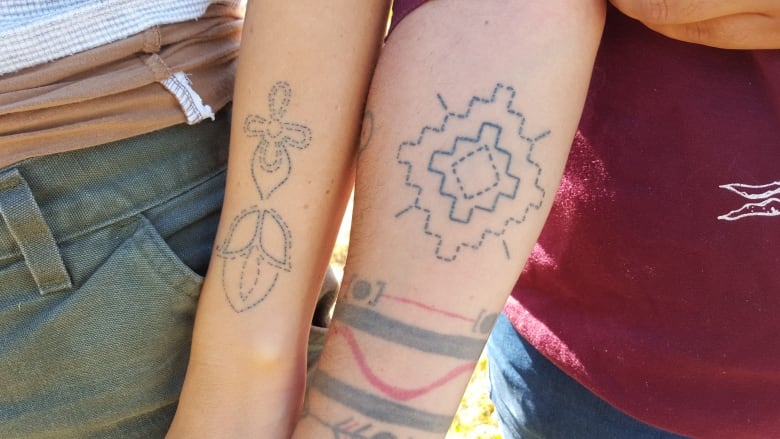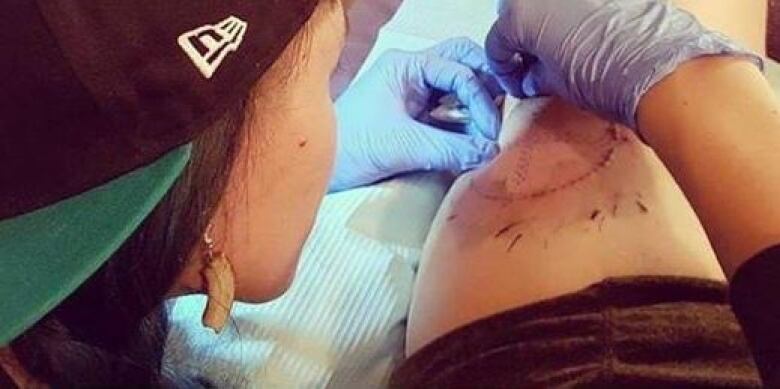Cultural lineage: Reclaiming the Indigenous art of skin stitching
'These tattoos have been displaced from us in the same way that people have been displaced from lands'

Jeneen Frei Njootli, a Gwich'in artist and performer, readily admits that she's no expert in the traditional art of skin stitching, but she's been an eager student.
"As soon as I did it, it just felt so natural to me. It reminded me a lot of sewing," she said.
It is a lot like sewing, in that it involvesa needle and thread, but it's actually a form of tattooing using the needle tothread trails ofink under the skin andform decorative and permanent designs.

FreiNjootli,originally from the Vuntut Gwitchin First Nation inOld Crow, Yukon, recently finished a cultural tattoo training residencyto learn more about skin stitching.
For her, it was a way to reclaim something that's been lost. Skin stitching waspracticed in Indigenous communities around the world for centuries, before missionaries and settlers arrived to discourage or even ban the practice.
"These tattoos have been displaced from us in the same way that people have been displaced from lands.These lines have been displaced from our bodies also as a result of colonization," Njootli said.
"Tattooing is a way of having sovereignty over our bodiesand of practising that, and also of letting people know who we are and where we come from."
'The live canvas'
One of Njootli's first "clients" was her friend Erika Tizya-Tramm, who asked Njootli to stitch a design on her thigh.
"Part of the process, half of it, was just talking about the piece and what it meant," Tizya-Tramm said.

"She was very professional and very detailed about what exactly I wanted, and what the meaning was behind it."
Tizya-Tramm described the processas painful at first ("basically just stitching my skin with ink"), but she said the pain was quickly forgotten in the power ofthe moment.
"Having that relationship with someone who is doing this artwork, and being the live canvas for that expression, is a really personal thing. And I think that helped take my mind to a different place than the pain," she said.
"This was doneat home with my best friend, over tea."
Not just something 'cool'
Frei Njootliagrees that one of beauties of skin stitchingapart from the historical and cultural significance is the intimacy it affords.
There's no loud machine, no special facilityrequired just a needle, thread, ink, and a clean and "physically and culturally safe" environment.
"You could do it in your home, you could do it outside, you could practise whatever things are important to you culturally,while getting one of these tattoos," she said.

"Alot of those [tattoo] venues that you can go [to]aren't necessarily open or you don't know that it's somebody that can understand your culture."
Frei Njootli doesn't turn up her nose at modern tattooing, though she has several of her own tattoosand loves to see other peoples' as well, and hear the stories behind them.
She's also willingto incorporatecontemporary designs and ideas in her own skin stitch work, if that's what a person wants. For Frei Njootli, it's all about helping people discover and share what's meaningful to them.
"Some people have created drawings that embody teachings that they've grown up with, and I've worked with them to create a design," she said.
"It's not just something 'cool'it'ssomething that has real cultural depth and meaning. And I count myself lucky to be part of someone's journey in that."
With files from Leonard Linklater












_(720p).jpg)


 OFFICIAL HD MUSIC VIDEO.jpg)
.jpg)



























































































